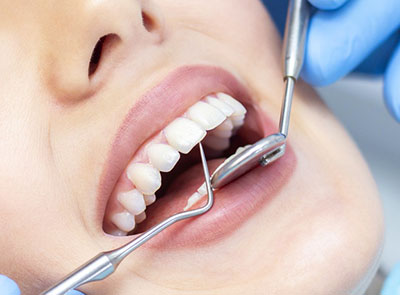Periodontology (Gingival Diseases) in Antalya,Turkey
Treatment Of Gingival Diseases

Periodontology is the study of the specialised system of hard (bones, cements) and soft tissues (periodontal ligament, gingiva) that support your teeth and maintain their position in the jaw. It is a dentistry branch that deals with related diseases and their treatment.
When such diseases are not treated at an early stage and in a correct way, they might cause bone and tooth loss or event some systemic diseases. For a healthy mouth, daily oral care (brushing teeth, flossing, mouth rinsing) should be done in order to keep away the bacterial plaque. It is fundamental to have a routine dentist control.
Which are the most common gingival diseases ?
If the disease has only affected the gingiva it is called “Gingivitis”, if it has affected both the gingiva and the bone underneath it, then it is called “Periodontitis”. In some patients, if the gingivitis is not treated, it might turn into a periodontitis. If periodontitis is not treated, it might cause loss of teeth as a result of bone loss.
Is it normal for my gums to be swollen and bleeding ?
In individuals with gingival diseases, symptoms such as gingival redness, swelling, itching sensation and often bleeding during brushing, bad breath, displacement and elongation of teeth, gingival recession can be seen. Gingival bleeding is the most common of these symptoms.
Is it easy to treat gingival diseases ?
First step for all gingival diseases is cleaning tartars and ensuring optimum oral hygiene. In the advanced stages of the disease, treatment can be continued with antibiotic use and surgical treatments.
If it only affects the gum, it is sufficient to clean tartars and ensure good oral hygiene. Dental cleaning is the process of removing tartars, plaque and colorings accumulated on the surface of the tooth with the help of special tools and it should be performed regularly every 6 months even in healthy mouths.
Is dental scaling a painful treatment? Does it damage my teeth ?
Tartar cleaning is not a painful treatment. During the process, tartars are removed from the tooth surface by vibrating devices. Tartar cleaning does not damage the tooth surface.
On the contrary, it is aimed to remove the deposits on the tooth surface by cleaning tartars and to obtain a smooth surface on the tooth and root surface. Tooth cleaning does not cause any damage to the surface of the tooth, and lack of cleaning can cause tooth loss eventually.
What is gingival recession ?
It is the recession of the gingiva towards the root tip, leaving the root surface exposed. As a result of gingival recession, root caries and aesthetic problems may occur.
How is gingival recession treated ?
In patients with gingival recessions, your physician determines the cause of recession in the first stage and applies treatment to eliminate it. In the second stage, the root surfaces exposed by gingival recessions can be closed by surgical methods.
Go gingival diseases affect our general health condition ?
Gingival disease is an important risk factor for development of heart attacks, strokes, lung diseases, diabetes and premature births/low birth weight. Smoking increases gingival diseases.
With our guaranteed treatments, we are always here for you.
Don’t hesitate to contact us, We will be happy to help anytime.



